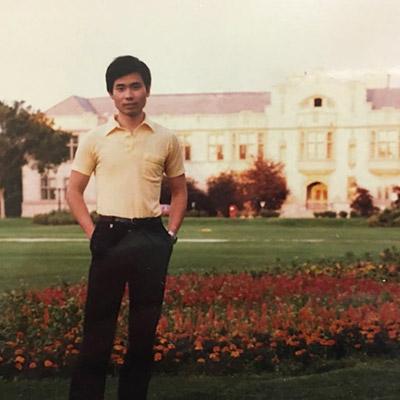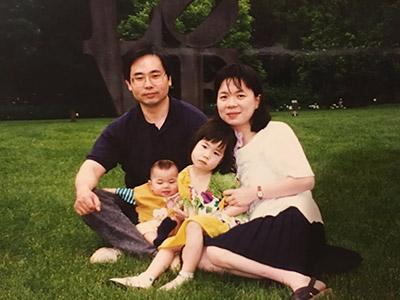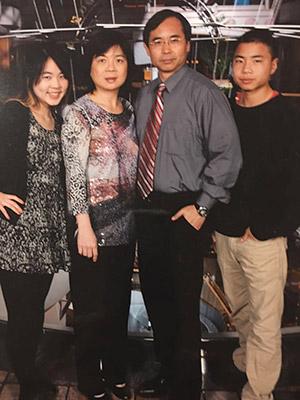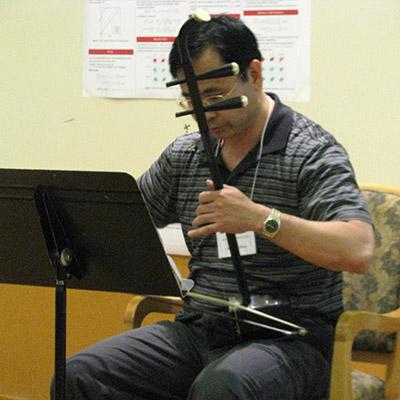
By Ashlie Chandler
Biostatistics is using math principals to solve real world problems. You can see an impact.
Xiao-Hua “Andrew” Zhou was 13 when the Cultural Revolution ended in China, returning a relative calm to the country and expanding access to public education.
“I was lucky that the movement ended when it did,” says Zhou, a professor of biostatistics at the University of Washington School of Public Health. “If I were older during that decade, I would have been sent to the countryside like millions of others to be ‘re-educated’ by farmers and peasants.”

Instead, Zhou stayed in school, honed his skills and gravitated towards mathematics.
“I’ve always been intrigued by numbers,” Zhou says. “In elementary school, students didn’t want to study, they wanted to play. I was able to sit down and get work done.”
A math teacher recognized his talent and eagerness and assigned him higher-level math problems “out of a book translated from Russian,” Zhou recalls. “I would spend a whole afternoon trying to solve one math problem, and once I did, it made me feel so happy.”
His commitment to his studies paid off and in 1980, just three years after China held its first nationwide university entrance exam since the Cultural Revolution, Zhou was accepted to the mathematics department at Sichuan University. At that time, “only 8 percent of people who took the test were admitted to college,” Zhou says. “It was terrifying that a single test could determine your entire future.”

Zhou graduated with a bachelor’s of science and went on to study statistics at the University of Calgary in Canada. He was among 15 elite students—the only mathemetician—from his Chinese university chosen to study abroad. They were among thousands of students and scholars from China sent overseas for further education each year to help rebuild the country’s scientific community.
Zhou, excited by the opportunities afforded to him in North America, never moved back.
He first pursued a one-year fellowship at Ohio State University, where he received a PhD in biostatistics. He then moved to Boston for a post-doctoral fellowship at Harvard University, and it was there that he discovered his research passion: the development of new statistical methods in diagnostic medicine.
“The beauty of mathematics is in the vigorousness of the theory and how you prove it,” Zhou says. “Biostatistics is using math principals to solve real world problems. You can see an impact.”

After his wife transferred to Seattle for work, Zhou was recruited by the U.S. Department of Veterans Affairs (VA) Puget Sound Health Care System to develop its first biostatistics program. Now, as director, he takes part in projects ranging from profiling quality of VA hospitals to analyzing health care costs.
“We can access data on more than six million veterans through the VA,” says Zhou, who is currently using the data to develop methods that help protect patient data.

Before data is released to the public, it is first scrubbed of any personal information, such as social security numbers, that could help identify patients. “We were looking at whether this is safe enough and it turns out it’s not,” Zhou says. “Our statistical methods can tell you, if you release a certain set of data, what the probability of risk is of patients being identified.”
His job with the VA also came with a primary faculty appointment in the School’s Department of Biostatistics.
“It means a lot for me to be part of a top-ranked biostatistics department,” Zhou says. “We have talented faculty with diverse areas of expertise. Some are internationally known in the development of new statistical methods, while others are known in the applied areas in public health and medicine.”
The graduate program, Zhou adds, is one of the best in the world. He has taught courses on the measurement and analysis of missing data and mental health, and he has supervised multiple PhD and master’s students as well as post-doctoral fellows.
“The field of biostatistics is multidisciplinary and it takes collaboration - that’s part of the fun,” he says.
Zhou, who joined the School’s Department of Global Health this year, collaborates extensively with colleagues in China to help build their database of dementia research, an area he knows well. He hopes to help standardize the way data is collected in China and one day be able to compare incidence rates and risk factors for Alzheimer’s disease in the two countries.
Zhou is associate director of the National Alzheimer’s Coordinating Center (NACC), which is based at the School's Department of Epidemiology and manages data from 29 Alzheimer’s disease research centers across the United States. He is responsible for methods research and solves any analytic challenges that investigators may face.
“When they use the database and they have a data problem they can’t solve, we develop new methods that solve their issues,” Zhou says.
For example, in dementia research, investigators use the mental state examination, or MSE, to screen a person for signs of dementia. In order to evaluate the accuracy of MSE, investigators compare the test results to those from a “gold standard” test – a diagnostic method with the best accuracy. In Alzheimer’s disease research, the gold standard is pathology; it is a brain autopsy.
“If your subjects are still alive, you can’t perform a brain autopsy,” Zhou says. “So the question is: How do you measure the accuracy of the diagnostic test when you don’t have a gold standard?”

This where Zhou and his team come in. They develop new ways to estimate sensitivity and specificity even when there is no gold standard. Zhou says there are “some methods that will let us make estimations, under certain assumptions.”
Biostatisticians often make assumptions based on variables that they might not be able to see.
“As biostatisticians, sometimes we are artists and other times we are detectives,” Zhou says. To be good at the job, he adds, “You need to do your homework and have necessary knowledge about the cases; you have to know the data you’re working with and the experiment that produced the data; and you need to ask the right questions. You need to be curious.”
Zhou has been developing new statistical methods for more than two decades. He has published 116 papers on the subject and 74 papers on applied public health and medical research. In 2002, he co-authored the first textbook on statistical methods in diagnostic medicine, and in 2007, he received the VA’s prestigious Research Career Scientist Award.
Zhou was recently elected as a fellow of the American Association for the Advancement of Science, the world’s largest general scientific society and publisher of the journal Science.

“There is a lot of uncertainty in the world and nobody can control it,” Zhou says. “The beauty of biostatistics is that uncertainty can be quantified.”
When he’s not mentoring students or analyzing data, Zhou enjoys working out at the gym, practicing hot yoga, listening to country music and playing the erfu, a traditional Chinese string instrument his father taught him to play.
Originally published on SPH Close Up